Neutron Stars#
Friday, Mar. 28, 2025
astrophysics of stars and planets - spring 2025 - university of arizona, steward observatory
Today’s Agenda#
Announcements (2m)
Reading Overview/Key Points (10m)
ICA 18 - High-Mass X-Ray Binary (25m)
Debrief + Share Results (10m)
Structure#
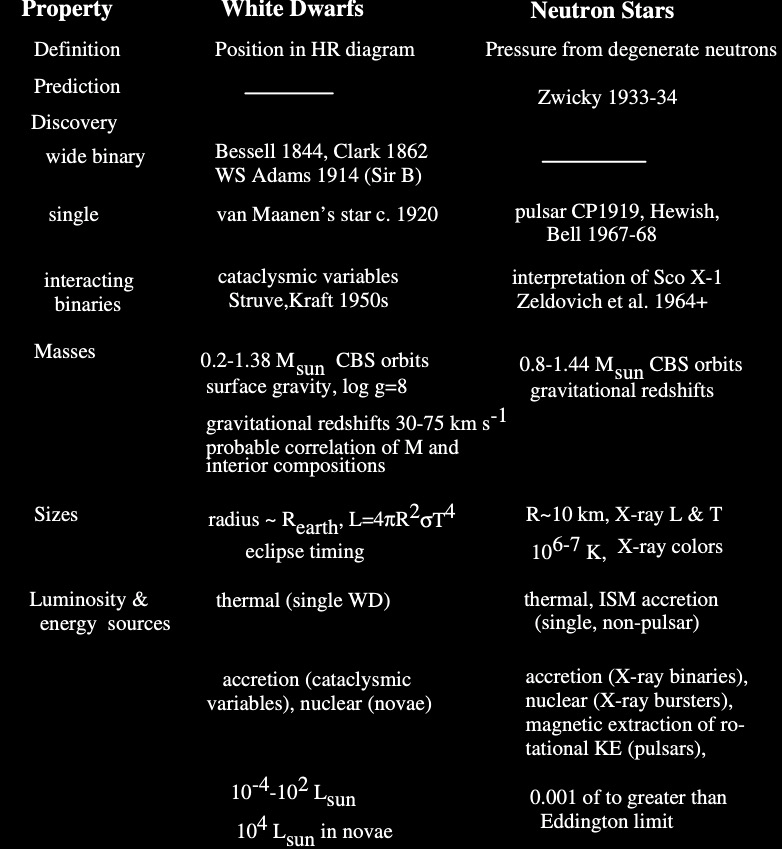
Table comparing properties of WDs and NS.
Hydrostatic Equilibrium#
The effects of GR and negligible when \(GM/R \ll 1\) are satisfied as in most stars, and even in White Dwarfs with \(GM/R \sim 10^{-4}\). However in neutron stars, \(GM/R \sim 10^{-1}\) and the effects of GR become important and must be included in the description of a NS in HSE.
This leads us to a general relativistic description of a spherically symmetric, isotropic mass known the that Tolman–Oppenheimer–Volkoff equation,
Definition 124
Similar to our original HSE equation, this also satisfies
Definition 125
Interal Structure#
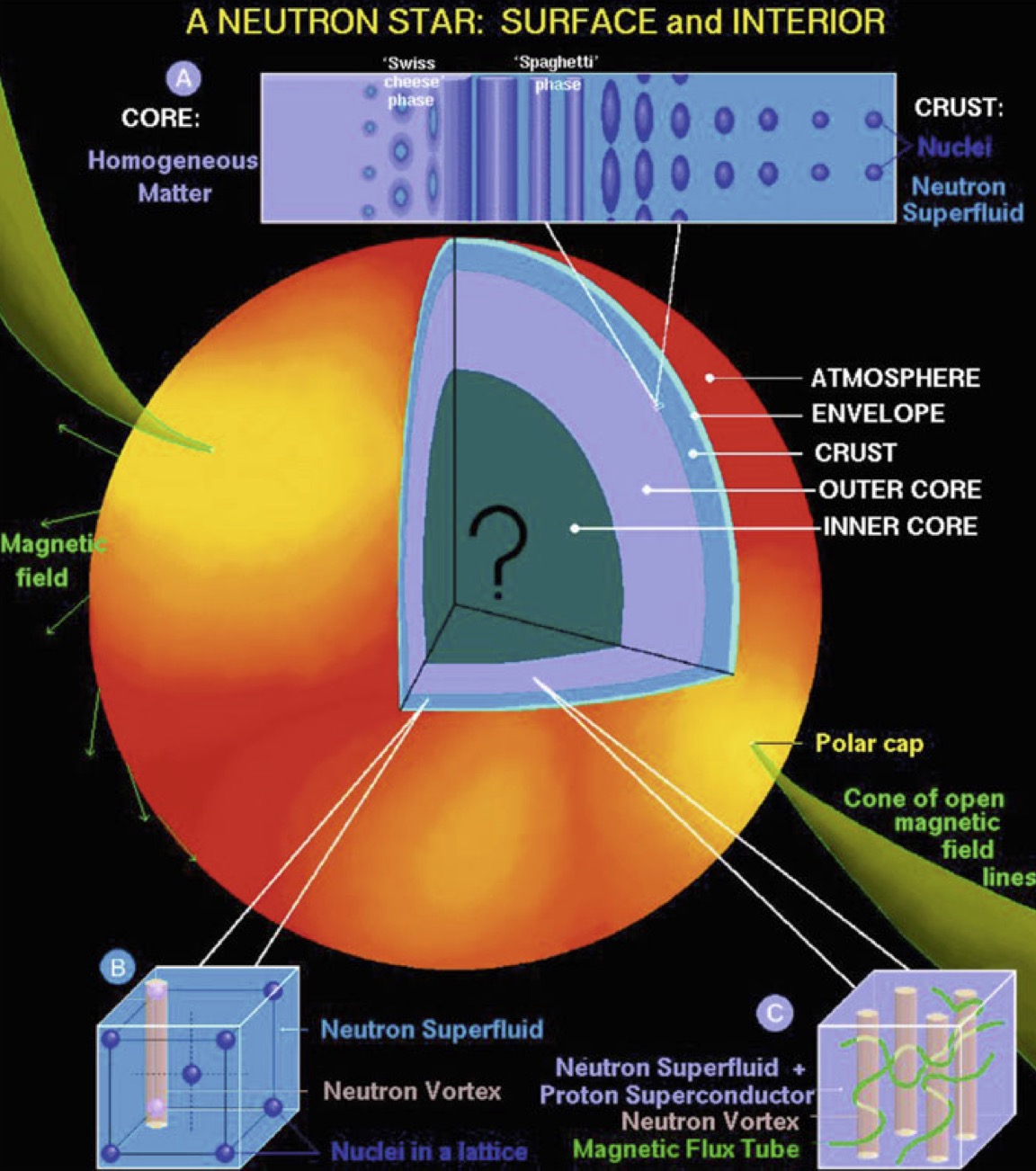
Rendition of the structure and exotic phases in the interior of a neutron star. Credit: Dany Page.
Another example of the NS cross section:
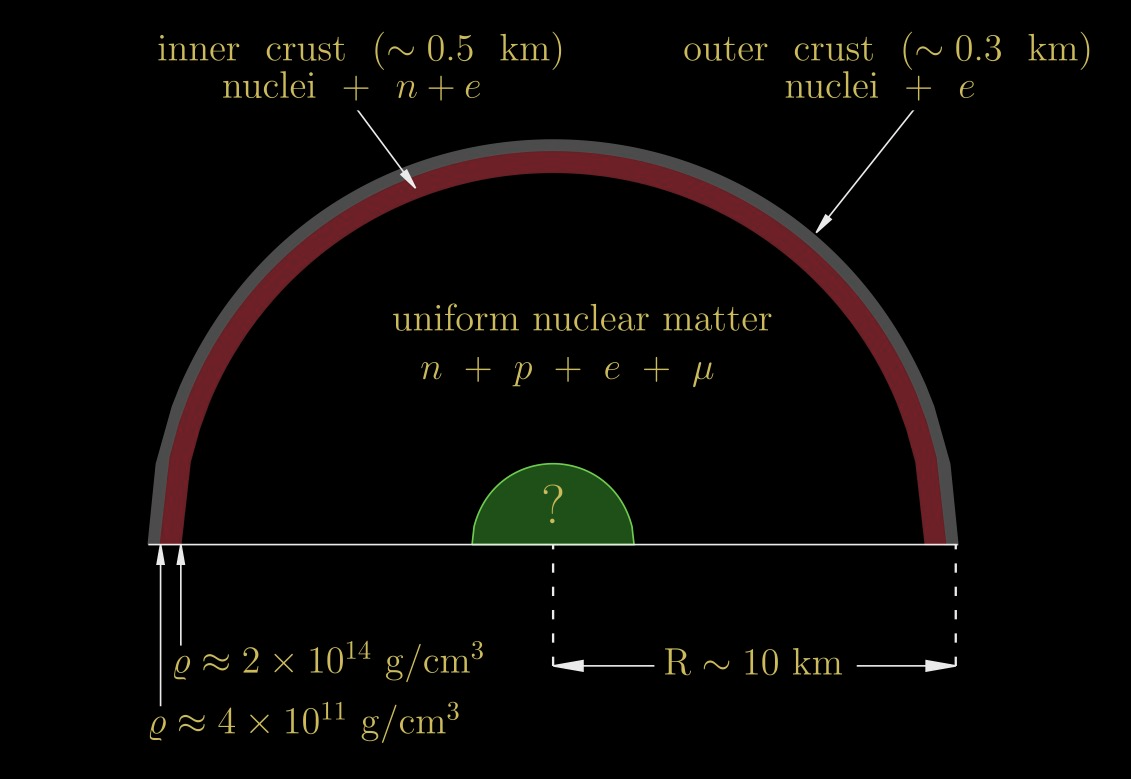
Schematic representation of the neutron star cross section. For reference, note that the central density of atomic nuclei is \(\sim2\times10^{14} \ \rm{g \ cm}^{-3}\).
Constraining the Neutron Star Equation of State#
To solve the TOV equations requires an EOS to close the system. However, the properties of nuclear matter at such conditions is still somewhat unknown. That leads to differences in inferred NS structures and even the M-R relation and maximum allowed mass of a NS.
The EOS of Neutron Stars determines the maximum allowed mass.
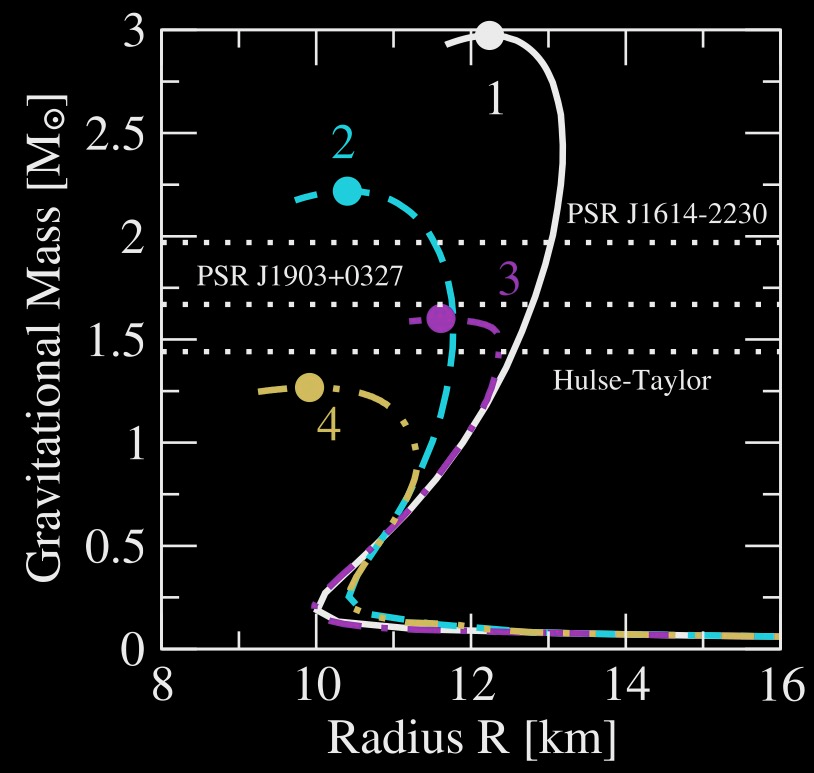
Mass-radius relation obtained from different models of neutron star matter. Credit: Vidaña et al 2011 EPL 94 11002.
New detections and measurements of NSs can help constrain the EoS.
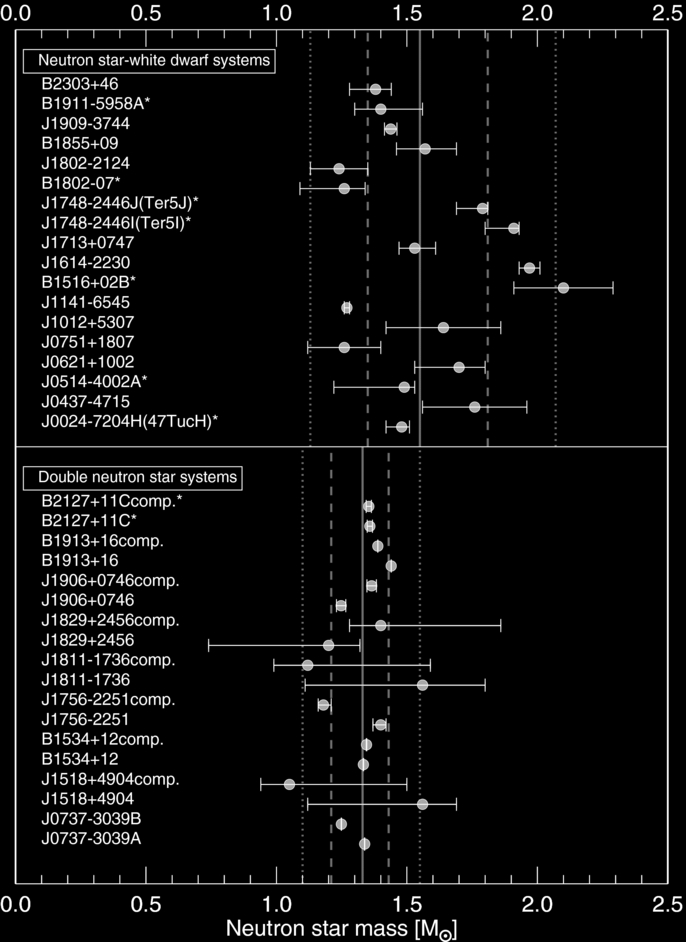
Measured masses of radio pulsars. Systems marked with asterisks are found in globular clusters. Credit: Kiziltan et al 2013 ApJ 778 66.
Note
Pulsars Radio pulsars are highly magnetized rotating neutron star that emits beams of electromagnetic radiation out of its magnetic poles.
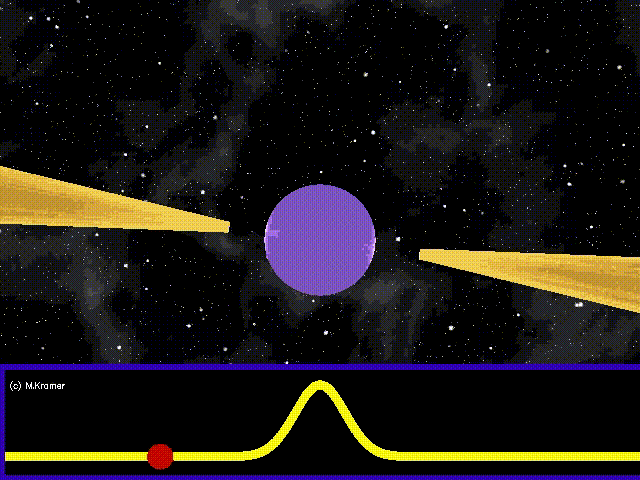
Mass Distribution of Neutron Stars#
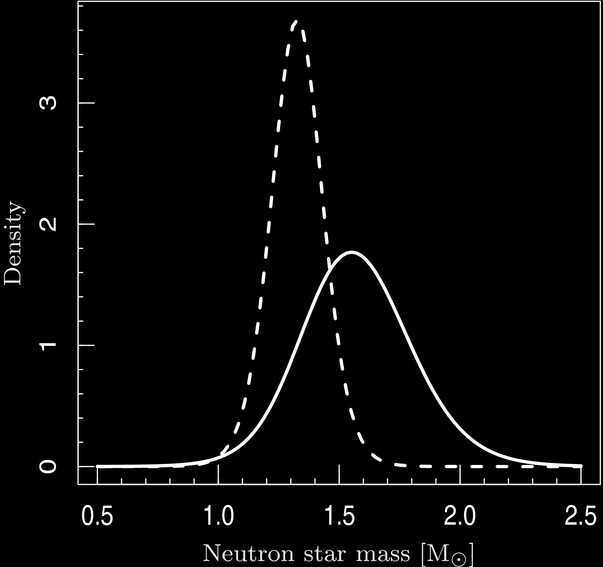
Posterior predictive density estimates for the NS mass distribution. DNS systems (dashed line) and NS–WD systems (solid line) mass densities have respective peaks at 1.33 \(M_{\odot}\) and 1.55 \(M_{\odot}\). Credit: Kiziltan et al 2013 ApJ 778 66.
In-Class Assignment 18#
In-Class Assignment 18 can be found here.


